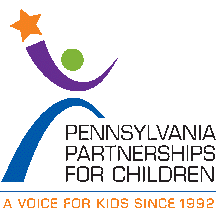Latest National Rankings for Child Well-Being Show Pennsylvania at 22nd

Pennsylvania ranks 22nd overall in child well-being, according to the 2023 KIDS COUNT® Data Book, a 50-state report of recent household data developed by the Annie E. Casey Foundation analyzing how children and families are faring. When looking specifically at economic well-being, the state ranks 22nd, while it ranks 20th in health.
The health domain looks at the percentage of children who lack health insurance, child and teen death rates, the percentage of low birth-weight babies and obesity among 10–17-year-olds. The Data Book reports that Pennsylvania’s rate of uninsured children is 4% and approximately 126,000 children cannot access affordable, quality health care coverage through Medicaid and the Children’s Health Insurance Program. In addition, Pennsylvania is ranked 23rd for the percentage of low birth-weight babies.
Pennsylvania families who rely on Medicaid for coverage for themselves and their children may have recently noticed a significant change: the Medicaid redetermination process that began April 1st through which DHS determines whether enrollees still qualify. This change comes about with the end of the public health emergency. During this unwinding process, it is imperative that children no longer eligible be connected to CHIP to avoid gaps in coverage and to ensure that children who remain eligible for Medicaid keep their coverage without experiencing inappropriate terminations or disruptions that often affect children more than the adult population.
The Data Book also reports that too many parents cannot secure child care compatible with work schedules and commutes. The Data Book reports that in 2020—21, 12% of children birth to age 5 in Pennsylvania lived in families in which someone quit, changed, or refused a job because of problems with child care. And women are five to eight times more likely than men to experience negative employment consequences related to caregiving.
Even if parents can find an opening for child care near their home, they often can’t pay for it. Pennsylvania’s average annual cost of center-based child care for a toddler was $11,346, or 10% of the median income for a married couple and 35% of a single mother’s income in the state.
The post Latest National Rankings for Child Well-Being Show Pennsylvania at 22nd appeared first on Pennsylvania Office of Rural Health.
Recommend0 recommendationsPublished in My Healthy Pennsylvania, Rural Health PA





